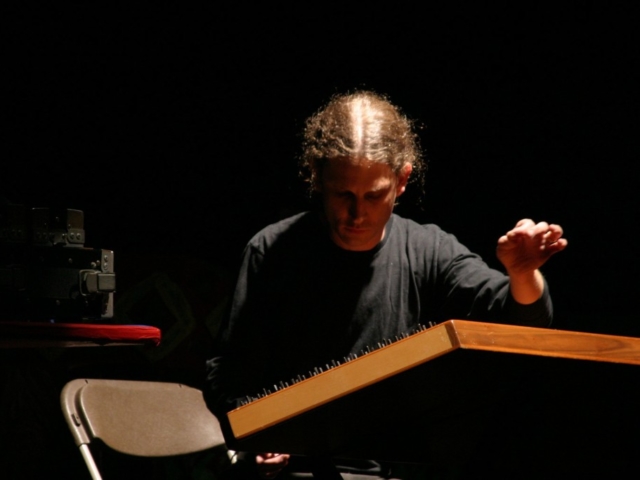In his solo works for electroacoustic hammer dulcimer, for which he uses the title Duclimer Flight, Dan constructs contemplative soundscapes that slowly unfold over the course of 30-minutes to one-hour. With roots in early minimalism, ambient music and acoustic ecology, these long-form “journeys” combine composed elements, often in the form of a fixed melodic pattern, with extensive improvisation while exploring the dulcimer’s rich harmonic properties. Using a mix of traditional and experimental (extended) techniques in combination with his self-designed laptop-based processing system, Dan gives this ancient instrument and entirely new and contemporary identity. Two such performances are documented on his new double-CD release Electroacoustic Works on XI Records, New York (March 2017):
Past performances include Human Resources (LA), CNMAT (Berkeley), Harrison House (Joshua Tree), Rhizome DC, Experimental Intermedia (NY), Issue Project Room (NY), Meridian Gallery (SF), Somarts Cultural Center (SF), Center for New Music (SF), Headlands Center for the Arts (CA), Highwire Gallery (PA), The Center, Corvallis (OR), Deep Listening Space (NY), Fringe Space (DC) and others.
About the hammer dulcimer:
The hammer dulcimer is said to have emerged in Persia around the 10th century. It is now found throughout the world in various forms, most notably in Iran, China and Eastern Europe. I was first introduced to the instrument in the context of Appalachian folk music, while growing up in the Washington, DC area during the 1970s. I eventually came to own one, and for many years it remained in the background of my musical life. It wasn’t until the mid-1990s while I was a student of Pauline Oliveros at Mills College that I began to use the instrument in contemporary music. I would later also spend several years studying Chinese and Near Eastern folk music in San Francisco with Shirley and Betty Wong, performing regularly with the Phoenix Spring and Flowing Stream ensembles. Inspired by Oliveros’ use of the accordion in an unconventional context and by the general spirit of experimentation in the Bay Area improvised music scene, I began to explore a mix of new and traditional approaches to this uniquely resonant trapezoid. As it has become my primary instrument, I have developed a number of extended solo works, pursued numerous collaborations including duos with saxophonist John Ingle, cellist Loren Dempster and sound artist Andrea Williams, and composed a growing repertoire of ensemble works based around the instrument for the Dan Joseph Ensemble.






